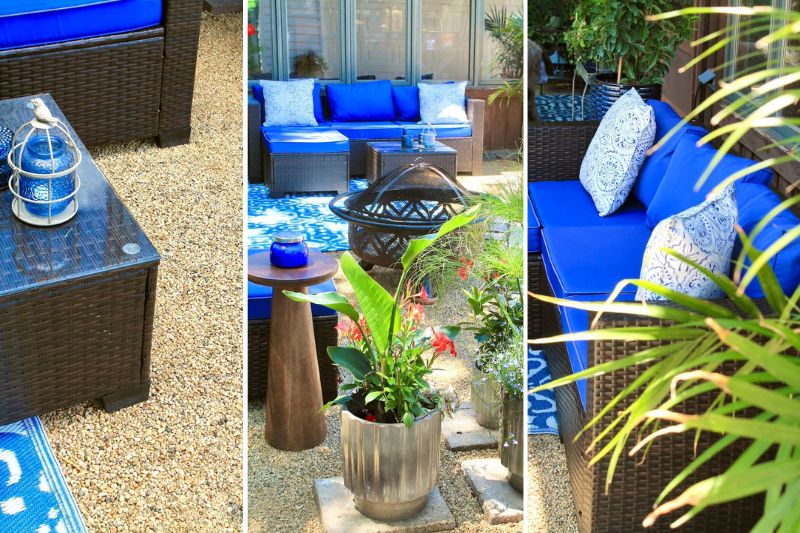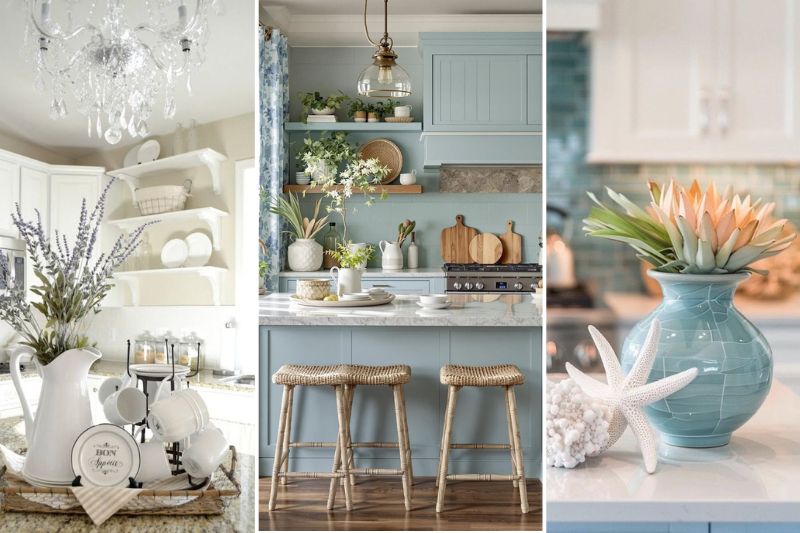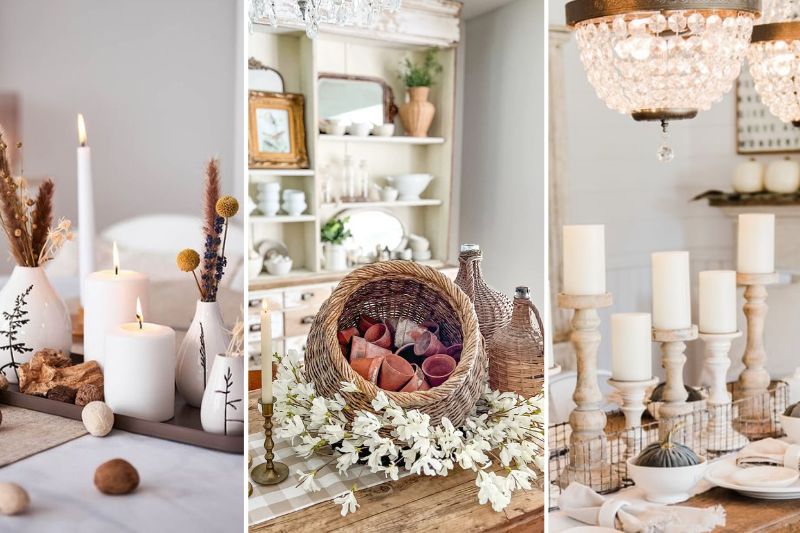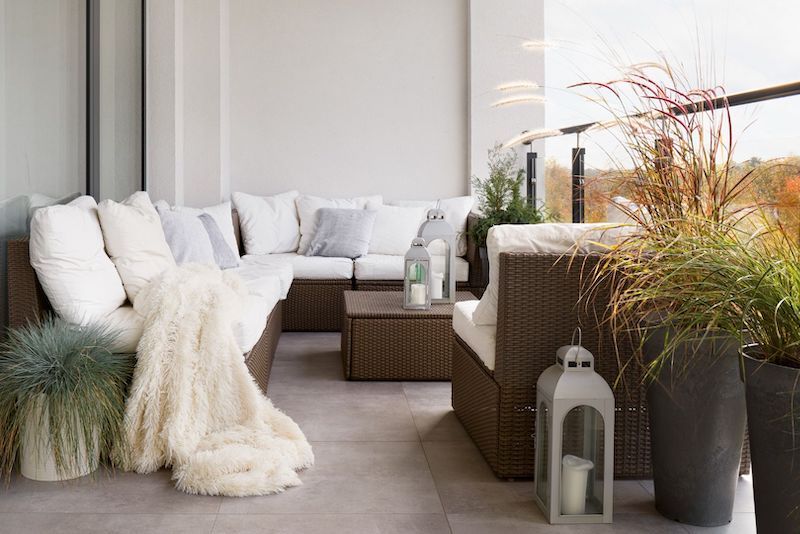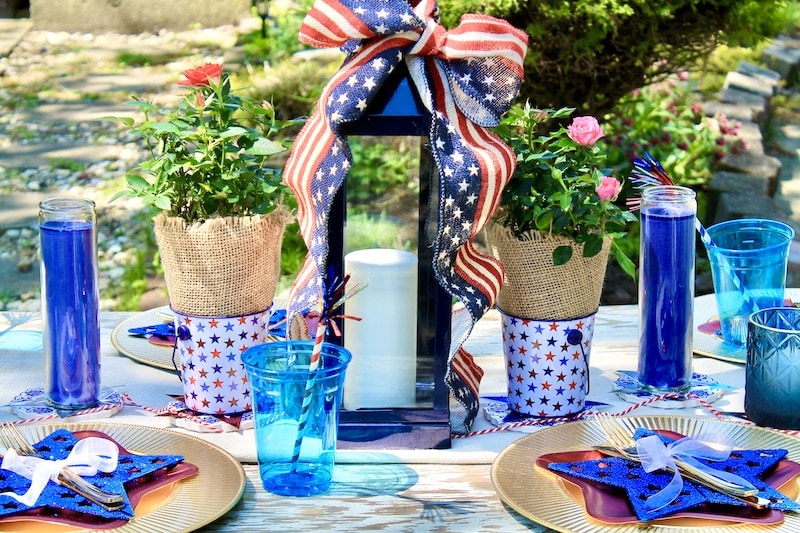With just a few materials and a little husband ‘n wife teamwork, we were able to complete our small diy pea gravel patio with fire pit in just under a week. A set of warm, sunny, and dry days helped us out as we rolled up our sleeves to take our small back patio from weed bed to backyard oasis.
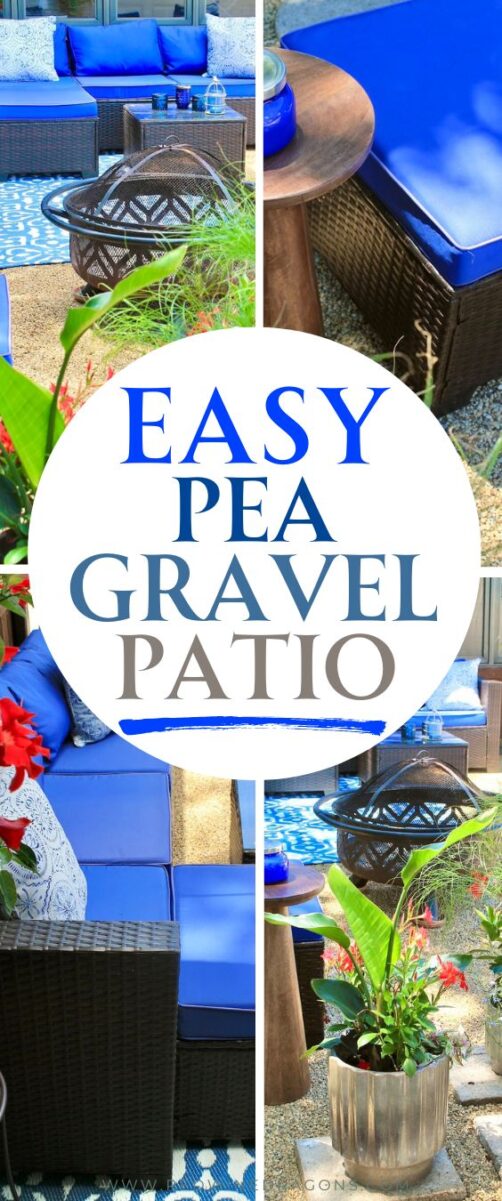
Easy Pea Gravel Patio Before | After Photos
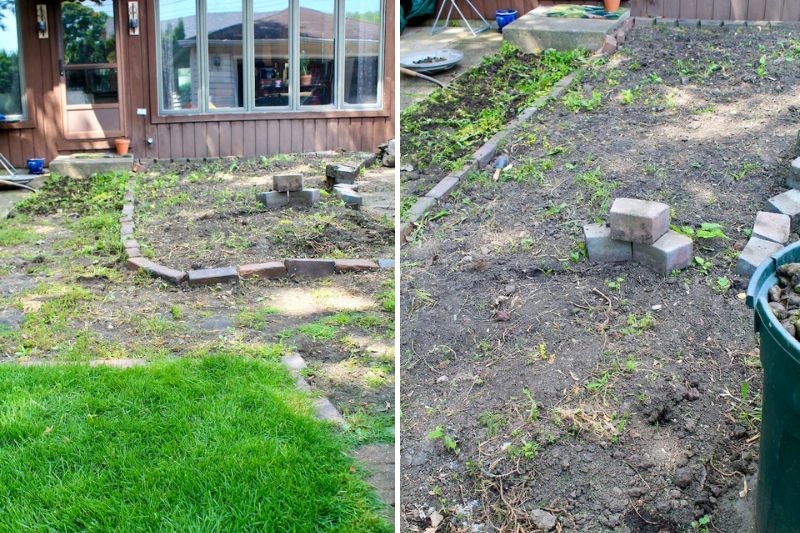
If you’re looking for a super budget-friendly way to convert an eyesore of a space into a relaxing summer patio—in just a few days—here are a few pointers to help you get it done.
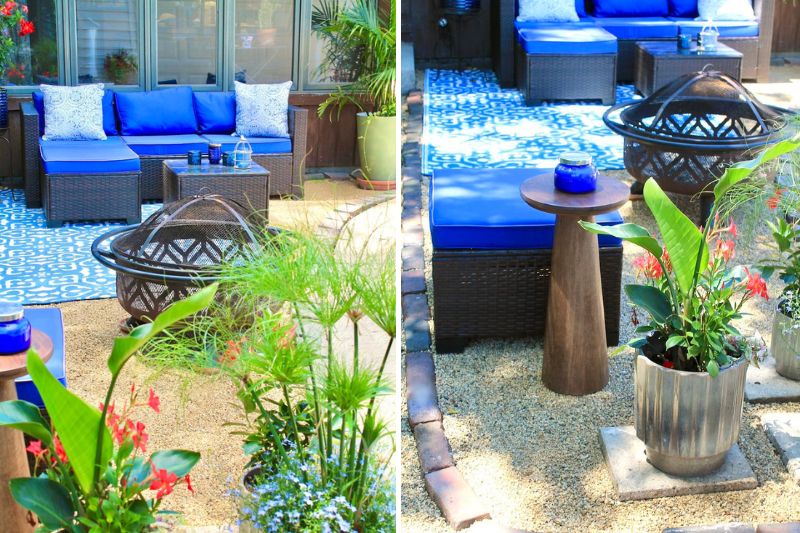
There are a few tools what will come in handy to help build a diy pea gravel patio with fire pit. Here’s what’s involved.
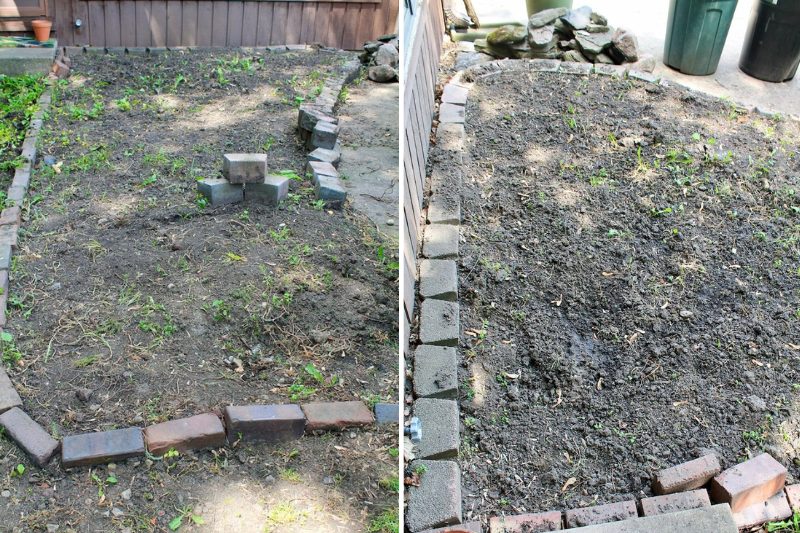
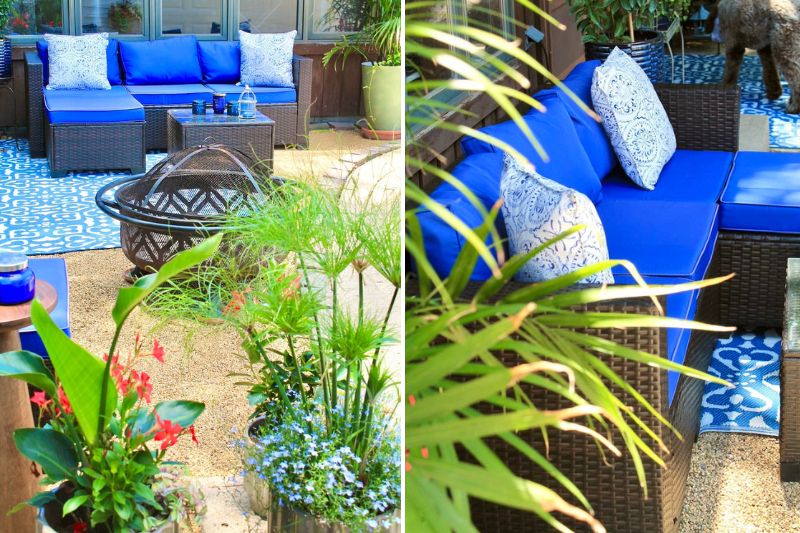
While this may or may not be exactly everything you need to help build your small diy gravel patio, it’s a solid beginner’s list for the basic necessities to help you start off on the right foot.
Building Your DIY Pea Gravel Patio with Fire Pit:
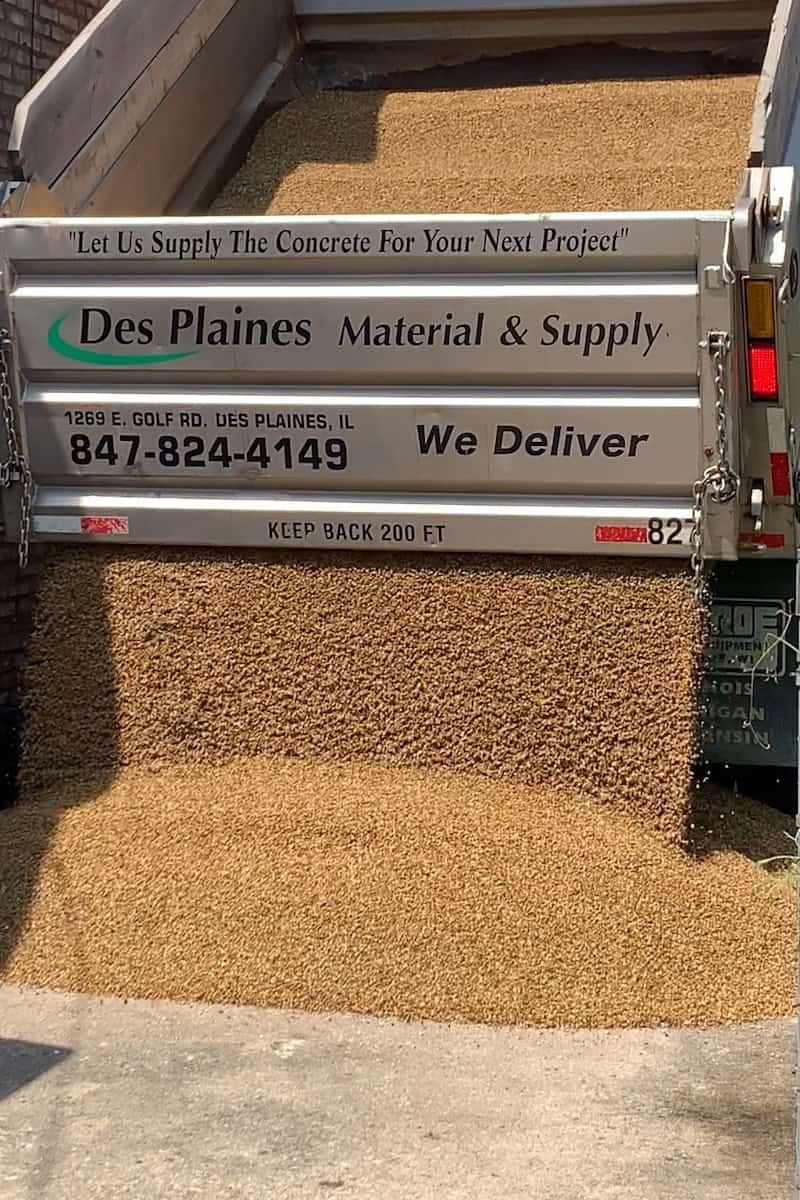
Here are a few essentials that will help you get started on your journey to a brand new diy pea gravel patio…
materials to help build a diy pea gravel patio with fire pit:
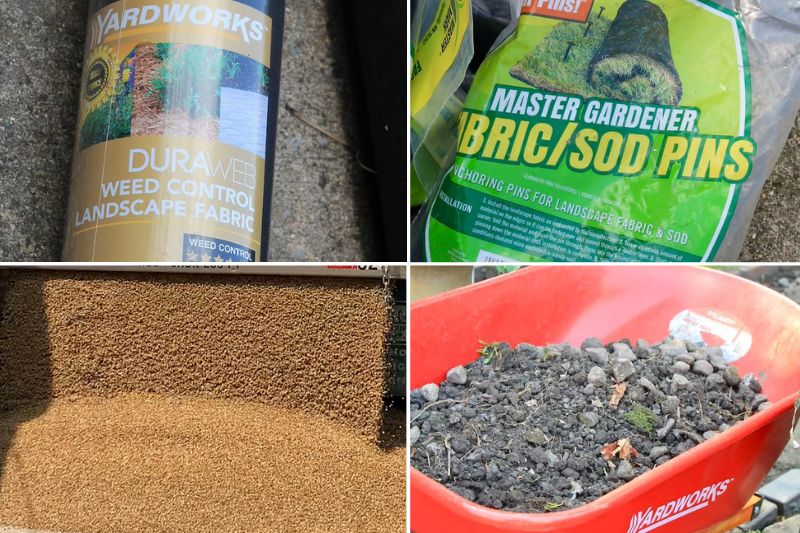
materials >>
- Pea Gravel
- You can contact a landscape service in your area and arrange a delivery date.
- The truck will come and pour it down right on your driveway! Be ready with measurements and calculations to order enough material for proper coverage.
- Step Stones / Bricks / Borders (optional)
- If you are planning on adding any edging or border accents to your diy gravel patio, consider the style, size, and placement.
- This came in handy for me when I realized that I wanted to decorate my glued down gravel patio with potted flowers and garden containers.
- I used square garden walkway step stones to create spots throughout the gravel patio that could support heavy garden containers with potted flowers.
- We also used round garden step stones to create a walkway that leads from the backdoor step out to the garden.
- Bricks were used to create a decorative border edging for the diy gravel patio itself.
- Landscape Fabric / Weed Control Fabric
- This will help to create a weed barrier for a weed free surface for years to come.
- Landscape Garden Stakes
- You’ll need stakes to poke through the fabric and into the dirt to hold the weed control fabric in place before adding your layer of gravel on top.
- Rock or Gravel Glue (optional)
- (2 to 3 jugs as needed) if using, this helps to keep your gravel patio surface in place.
- Having two boys and a 50 lb dog, we knew this space would need to endure a lot of rough ‘n tumble, so we opted to spray our gravel surface down into place. It worked out beautifully!
- It doesn’t matter which brand you buy as I think most work the same, but remember:
- DON’T dilute glue with water (it won’t cure right)
- DO give it ample time cure and dry in between applications
- DO expect to apply multiple layers as needed until everything stays in place as desired.
- We had to apply multiple layers and repeat the process until the desired effect was achieved.
- It wasn’t hard to do with a pump sprayer, it just needed a little time and patience.
Tools >>
- Gardener’s Wheelbarrow
- For transferring / distributing excess dirt out of the workspace area and on to other spaces throughout the garden as well as transferring the gravel to the work site.
- Heavy Duty Digging shovel
- One or two, if there’s two of you, one for each will help the digging process go a lot faster. We used long heavy duty gardener’s shovels to help break up dirt and dig the surface down by a few inches to help create a deeper surface that would contain a nice thick layer of gravel.
- Square Transfer Shovel
- Once again, if there’s one for each, the transfer goes a lot faster! We found this tool particularly helpful to fill the wheelbarrow each time and move gravel from the main driveway pile to the worksite.
- Leveling Rake or Landscape Rake
- This tool was helpful at the end once we transferred in all of our gravel. The leveling rake helps to gently push the gravel into place filling borders and edges all around without spilling over onto undesired areas. It also helped to create a finished level surface right before applying a glue coat to stabilize the gravel.
- 10 Gallon Outdoor Container with Lid
- One or two, perfect for filling up with leaves, weeds, rocks, and excess dirt and debris as you’ll need a place to put all of the things you clear out / remove from the workspace.
- Small Electric Garden Tiller (optional)
- If you’re working a smaller space, it may not be necessary.
- For larger spaces with lots of ingrown weeds and plants, I recommend this tool as a first step to loosen up the dirt and prepare it for easy weeding and excess plant removal.
- Removing all that extra stuff helps to dig, tamp down, and level the dirt floor with ease later on.
- Handheld Steel Tamper Tool
- We used this tool many times after digging down our dirt surface and before putting down the landscape weed fabric.
- It helps to level the prepped dirt surface area and create an even layer for the fabric and gravel to rest on.
- It was also helpful after putting the gravel down, as you can wet the gravel and then use the tamper to compact it down to create a beautiful, even floor-like patio surface.
- Multi-Purpose Lawn and Garden Pump Sprayer
- This tool was a handy dandy compact sprayer for applying the rock and gravel glue in one easy step.
- Just follow the directions to assemble the pump, fill the little jug with glue, screw on the lid, pump, and spray the glue (preferably on a nice warm and rain-free day).
- Small Handheld Gardening Shovels
- One or two, to help remove stubborn weeds creeping up edges and borders for a clean finish all around.
Gear >>
- Work Gloves
- One or two sets, for all that gravel and dirt work you’ll be doing with your hands.
- You’ll need an extra layer of protection as you work with a variety of tools and materials.
- Gardener’s Foam Kneeling Pad
- These come in handy when you spend a bit of time on your knees getting that weed barrier down and putting your stakes in place.
- Alternatively, knee pads also offer an added layer of padding and comfort.
- Heavy Duty Work Shoes
- Any kind! It’s something not to be overlooked as you’ll need them when working with a variety of tools in the dirt spilling and moving rocks, gravel, and debris.
- Open toe shoes of any kind are not recommended and can result in injury.
- You’ll want a proper pair of closed-toe work shoes to protect your feet so that injuries don’t set you back.
Decor + Ambiance >>
- Patio Furniture
- When all is said and done, it will be time to bring the indoors out for the season! Finally, you can set up and style your new diy gravel patio space with all your favorites! Bring out that beautiful patio set so you can kick back and sip on something cold.
- New Fire Pit
- Last, but not least, no space is complete without a touch of cozy flickering flames. Add a firepit to mark the spot as you create a memorable gathering space for friends and family to share for years to come.
- Garden Containers and Potted Flowers
- Breathe a bit of colorful life into your patio space by adding pops of vibrant color with your favorite potted blooms! Stylish containers add finishing touches and lots of character to your favorite outdoor spaces. The patio is no exception!
1. Break up Dirt and Remove Excess Weeds, Plants, rocks
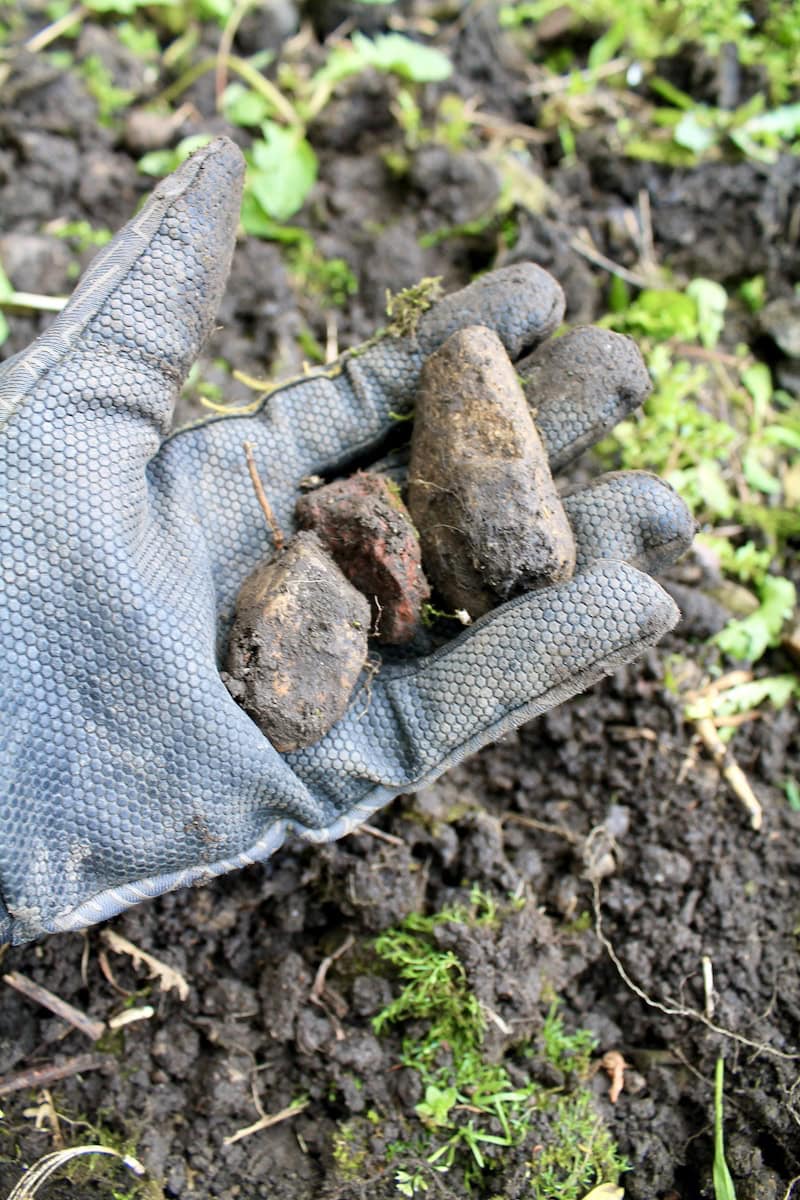
This is where the small electric garden tiller may come in handy if you’re working a larger surface area. We did our small 11.5 ft wide by 21.5 feet long rectangle space mostly by hand.
2. Dig Down To Create Depth, Remove excess Dirt
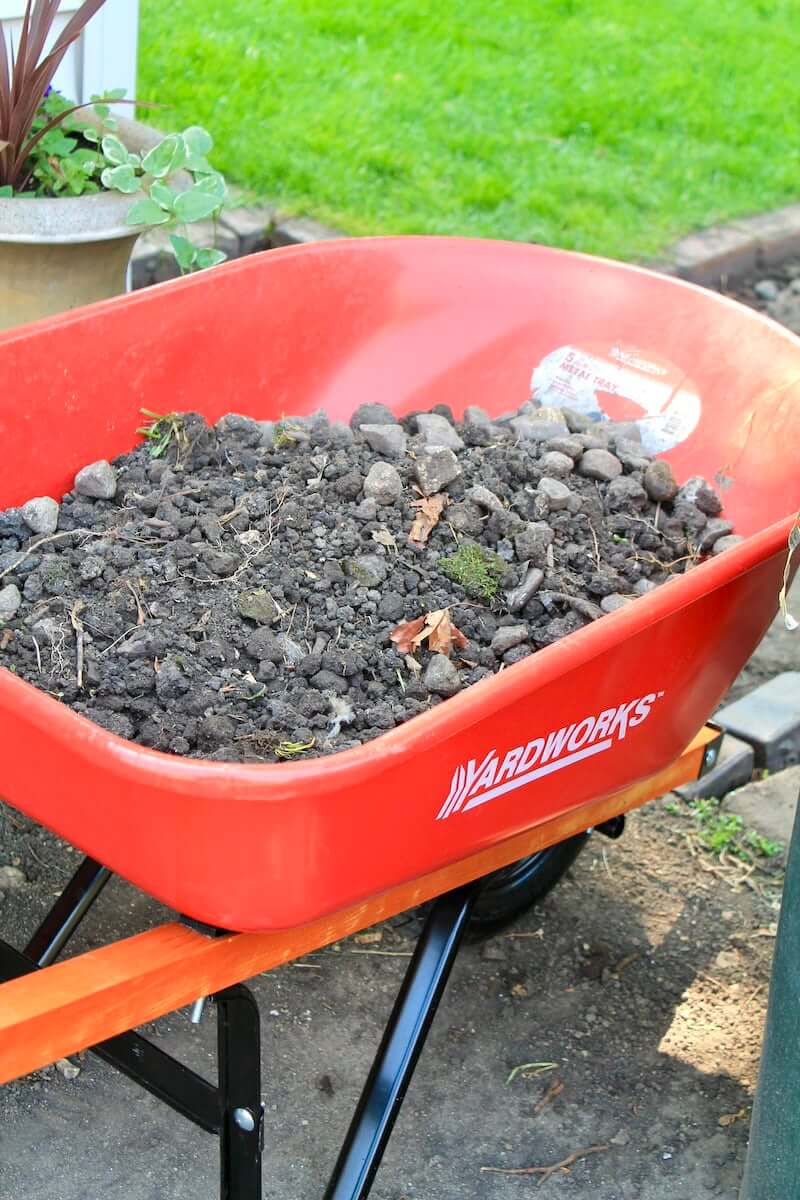
Once you’re finished clearing debris and removing piled up weeds, plants, and excess dirt, you’ll now be down to a nice clear dirt surface that you can easily work with a shovel. It’s time to dig down to create some depth that will contain the gravel.
This will help to prevent the spilling and rolling of gravel onto unwanted surface areas whether it be an adjacent driveway or a nice green lawn that you don’t want filled with small rocks on mow day.
We knew we wanted to layer up at least 3 inches of pea gravel, so we dug down about that exact depth, 3 to 4 inches. Account for a few more inches of depth when you dig down at a slightly graded angle that leads away from the house (especially if patio is adjacent to the home).
Digging down at a slight angle away from the home will ensure water drains away in the opposite direction of the building.
3. Tamp Down The Dirt Surface
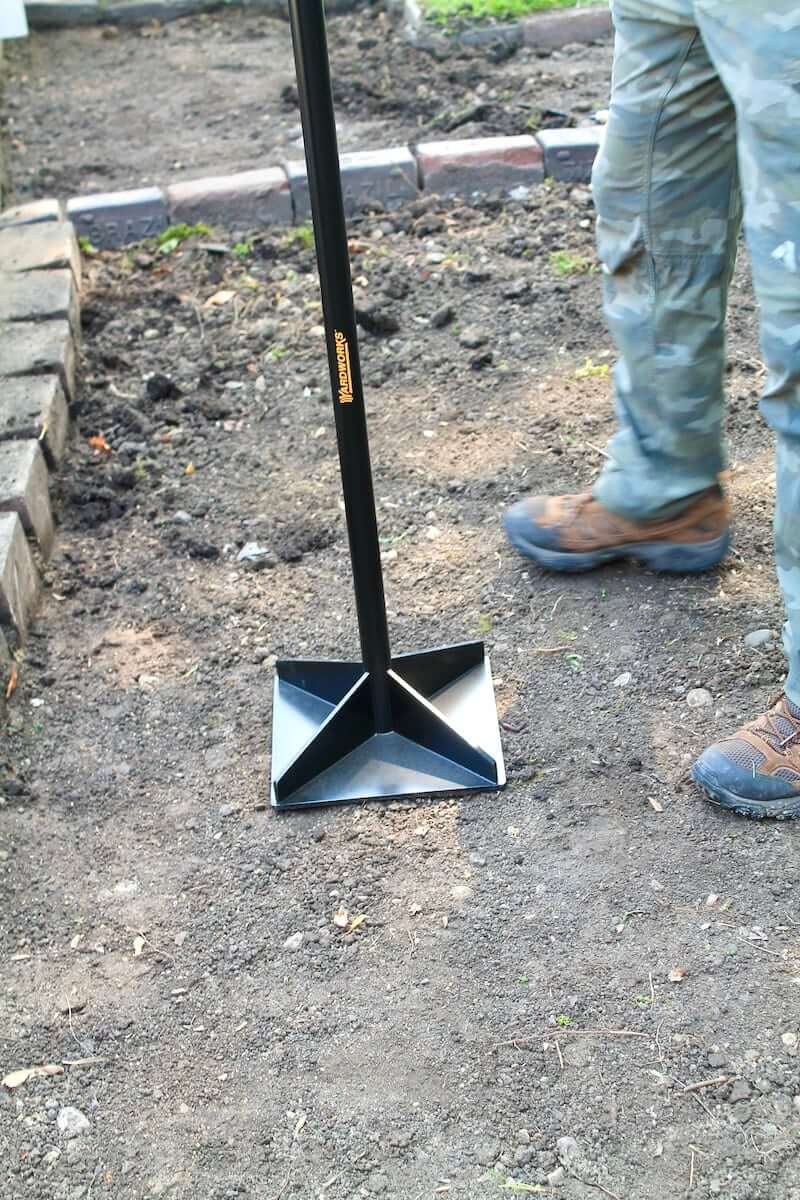
Once you’ve dug down and created your depth, it’s time to even out the ground surface and prepare a level area to receive a weed barrier and gravel later on.
For our smaller rectangular patio area, we used a handheld tamper to firmly tamp down all around. This helps to level the dirt so that you’re left with a nice even patio area by the time the gravel is added.
4. Put Down a Weed Barrier
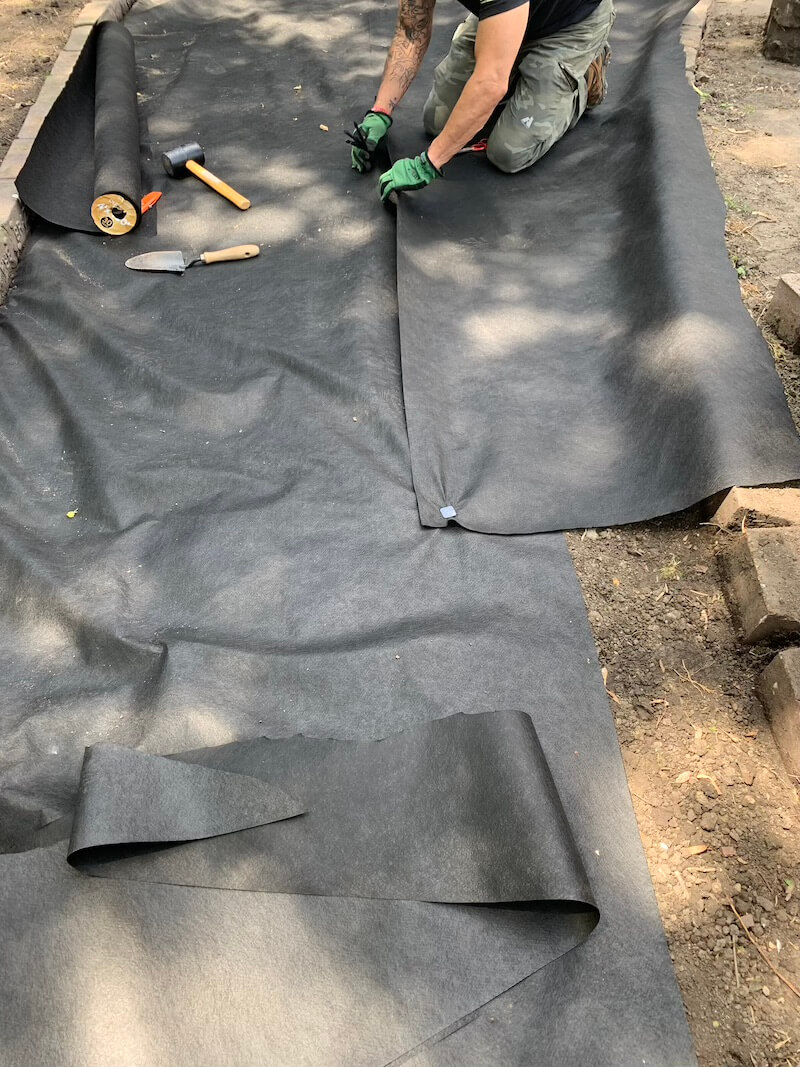
Now that your dirt surface is even and clean, it’s time to keep your gravel patio area weed-free by stopping future weed growth. Create a solid weed barrier by putting down weed block fabric or landscape fabric to stop things from growing in through the gravel season after season.
Place weed fabric directly over finished dirt surface and be sure to stake it down with lawn / garden stakes. If the fabric is not wide enough to fill a certain space, overlap the weed fabric by a few inches to create a stable seam.
5. Add Your Pea Gravel to The Workspace
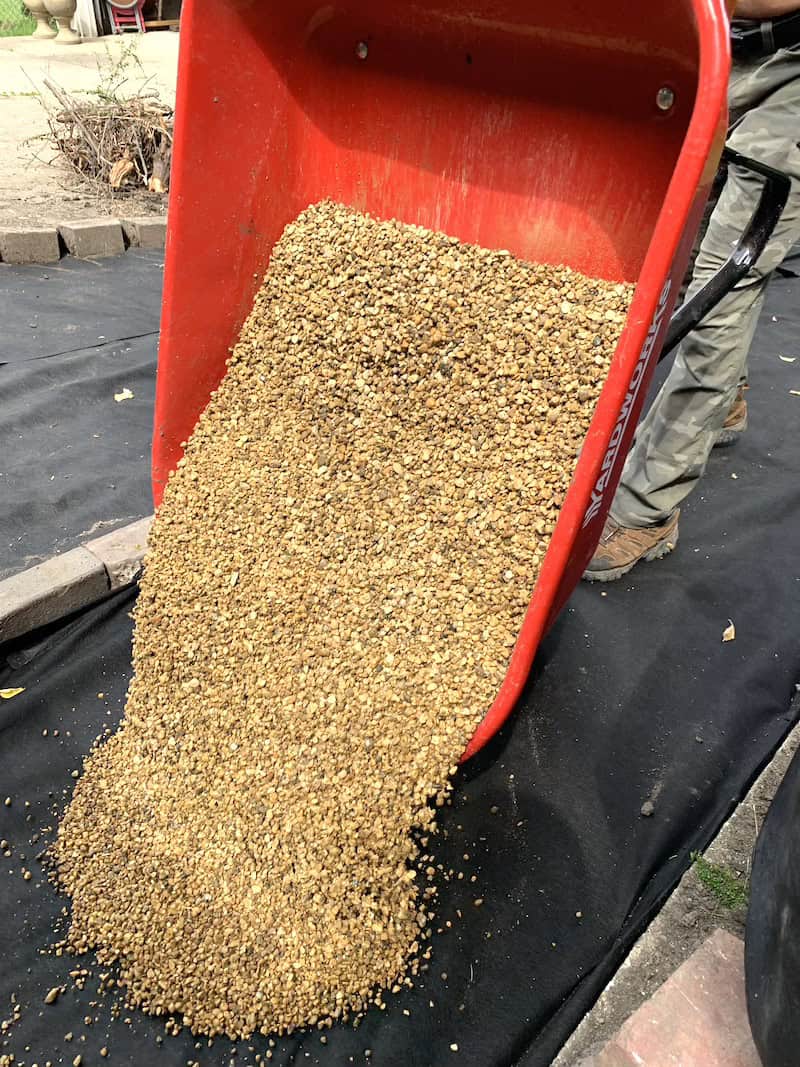
Once the weed barrier is set into place, it’s time to go ahead and add your pea gravel to the patio area. If necessary, use a wheelbarrow to help transfer pea gravel from the main pile to the worksite. Transfer shovels come in handy here to fill the wheelbarrow as you come back and forth for more material.
6. Even Out and Level Your Gravel Layer
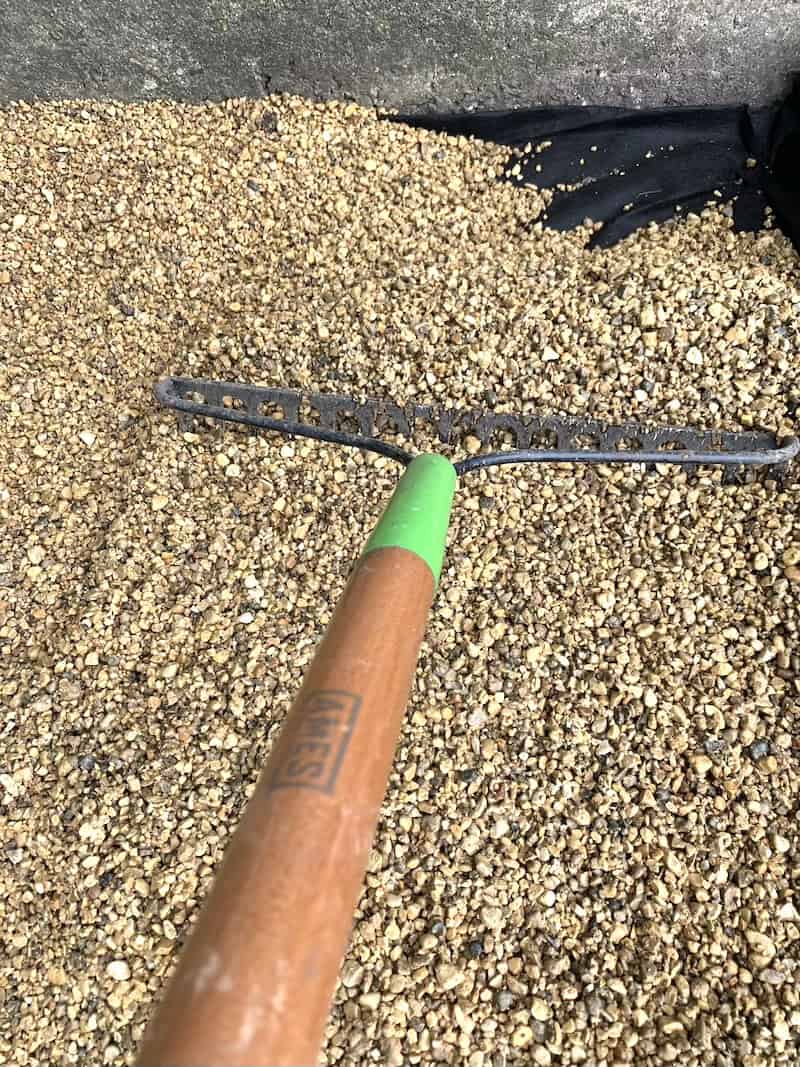
Use a leveling or landscape rake to work the gravel into borders and edges. Gently swipe the gravel surface area with your leveling rake to even out any bumpy hills in the newly poured gravel.
Additionally, once combed through, it helps to hose down the gravel (moistening it like sand). You can then come back in with the handheld tamper and tamp it down all over to compact the gravel and create an even surface.
Wetting and tamping down the gravel is especially helpful if you plan on using rock and gravel glue to glue your pea gravel into place, further stabilizing it.
If doing so, please let the gravel surface dry completely before applying glue. The rock and gravel glue should be applied to a clean dry surface.
7. Add a Layer of Glue to Stabilize your DIY Pea Gravel Patio Surface (Optional)
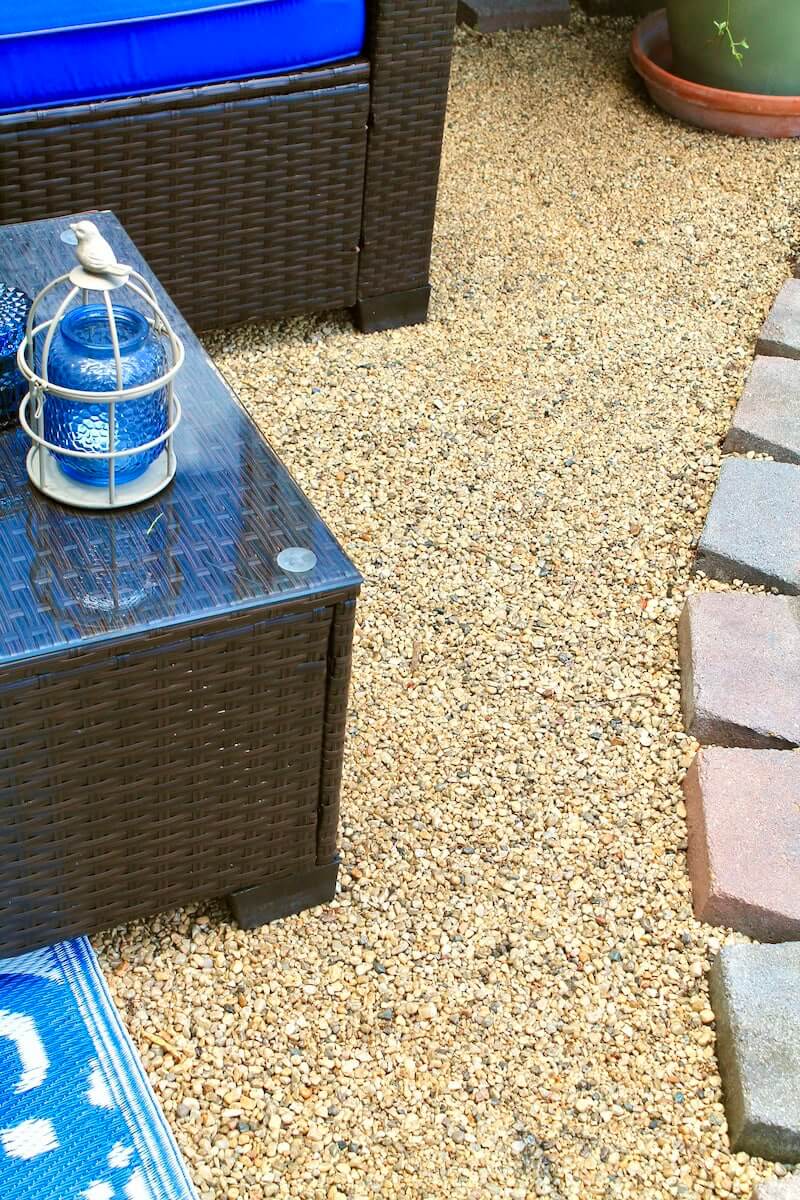
Once your pea gravel is poured out and combed through, and leveled, you can stop there or take it a step further to stabilize the patio with a layer or two of rock and gravel glue.
Not everyone will want or need this last added step, but it is quite handy for anyone:
- with dogs
- with kids
- with heavily trafficked areas
- areas where you don’t want stones popping into your shoes at every pace
These spaces will benefit from an added layer of glue which keeps the small stones in place, eliminating the constant need to sweep and push the gravel back into place. It will remain nicely contained once applied.
>> To Apply The Rock / Gravel Glue:
- Use a lawn and garden pump sprayer.
- Follow the package directions to assemple the sprayer tip for the pump container.
- Fill your container with the rock glue and seal with the top.
- Pump the container repeatedly, multiple times until enough air builds through the hose to begin pushing the product out through sprayer.
- Spray the level gravel surface with an even layer of glue. Most glues will appear white (almost like elmer’s glue) and then go on to dry in a clear layer later on.
- Once the first layer is cured and dried, inspect the gravel surface and be ready to re-apply additional coatings as needed until your gravel surface is locked into place.
- Be sure to apply glue on a set of warm, sunny, rain-free days.
- Give each glue application time to cure, about 12 to 24 hours in between applications. Preferably overnight.
- Section or rope off the wet glue area to avoid steps, uneven marks, and disruptions in the drying process.
Impromptu Won’t Work: Have a mind to plan IN Advance
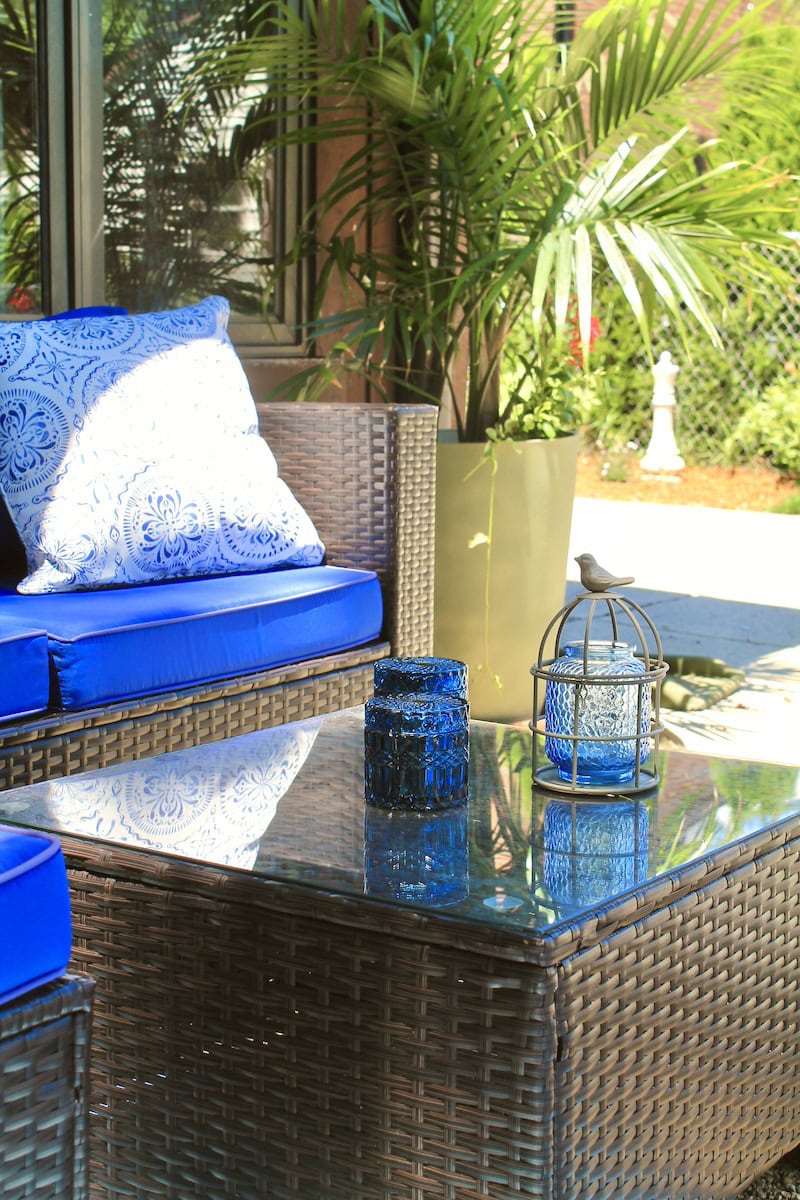
- You’ll need to take stock and gather materials to see what you have and what you’ll need: there might be some items you might not have like transfer shovels, a gardener’s wheelbarrow, or a tamper tool (for leveling outdoor ground). These will come in handy for moving the gravel and working the ground.
- You may have prep work to complete before gravel delivery day: digging your specified area out, clearing it of debris, weeds, stones, and rocks, taking measurements, removing / relocating any large amounts of excess dirt to create depth, and staking down weed fabric, etc.
- You’ll have to be prepared with measurements / calculations: so that when you call the company to deliver the gravel, they can bring the accurate amount of material you’ll need for desired coverage.
- Knock it out in advance: so that on delivery day, you can work without delay. This will really help for those of you who are working within time constraints and want to get it all done as seamlessly as possible.
Helpful Tips & Tricks To build the perfect diy pea gravel patio with fire pit this summer
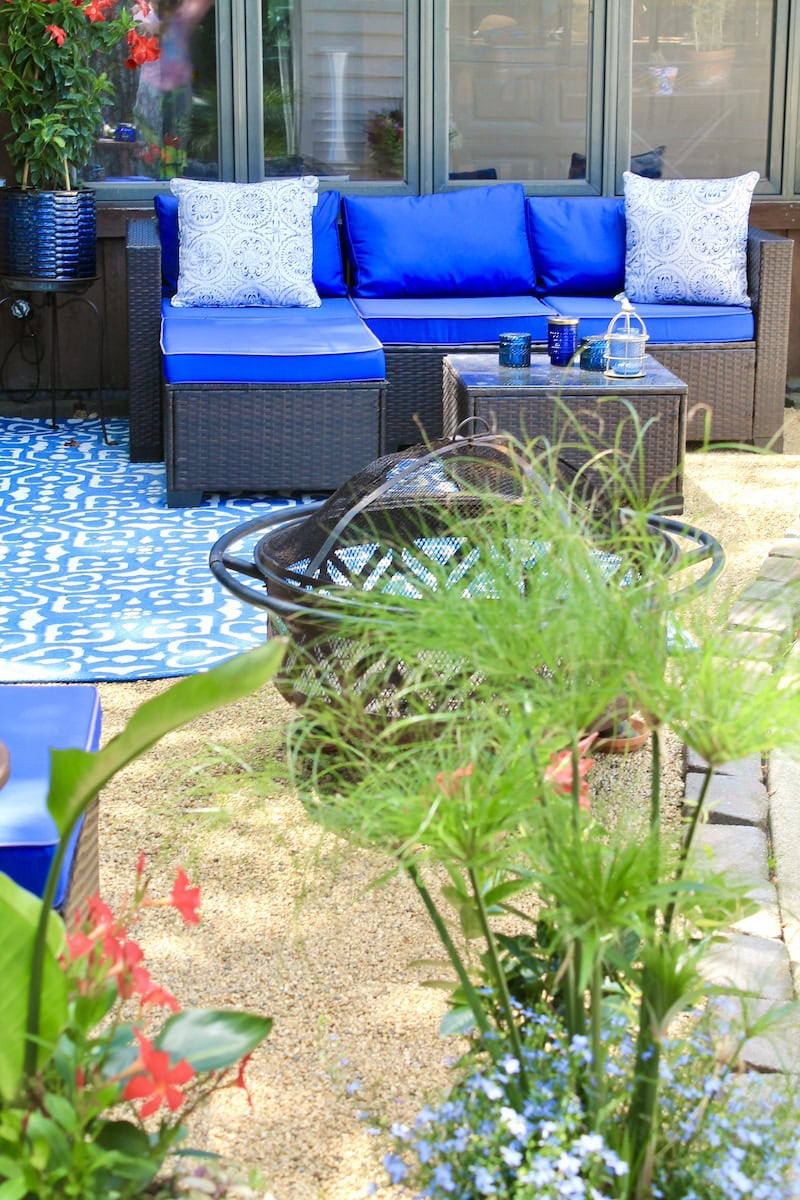
- MEASURE – Measure the desired coverage area first, in square feet.
- CONSIDER YOUR COVERAGE – Keep in mind that 1 yard of gravel covers 100 square feet, 3 inches deep. However much pea gravel you need depends on how deep you want the gravel. I recommend a layer at least 3 inches deep for good drainage.
- DIG DOWN – Depending on your space, you may have to spend some time digging down and removing excess dirt to create sufficient depth to contain the gravel. As you dig, you should grade the surface area of the soil down at a slight angle that leads away from the house. This helps guide any draining water away from the house. When you add the gravel on top, you’ll then be able to level the surface evenly at the end.
- DON’T SKIP ADDING A WEED BARRIER – I know it seems like an extra bit of work, but it’s a crucial important step you don’t want to overlook. Remember to place that layer of weed fabric over the dirt layer and stake it in place. It’ll help keep weeds at bay for a beautiful and resilient gravel surface free of weeds. It’ll look clean and ready every season.
- PRESERVE YOUR GRAVEL PATIO FLOOR WITH GLUE – If desired, after smoothing out the gravel with a leveling rake or landscape rake, you can spray a layer of gravel glue to stabilize the pea gravel in place. This will allow you to create a more stable floor with the gravel and allow for better support of patio furniture and any other accents you may want to add to your gravel patio.
- MAKE TIME FOR EXTRA STEPS – Oftentimes, you’ll have to inspect the initial layer of glue and add more coatings as needed (for any missed spots where gravel is still too loose). Be ready to repeat the process as necessary. Allow sufficient time to dry in between coatings, preferably overnight or 24 hours. Be sure to coat the gravel with glue on dry days with no expected rain.
- CHOOSE A STRETCH OF DAYS WITH GOOD WEATHER – For best results, plan in advance and pick a nice set of warm dry days coming ahead in the forecast. Pick even tempered days with no inclement weather. This will give you a chance to complete your work with little setbacks, and, if using, it will allow any glue layers applied to the gavel a chance to cure nicely and set up for the summer. The hotter and dryer the day, the better it will cure. Rope and section off the area until glue is completely dry to avoid any disruptions to the process.
- IF USING, APPLY GLUE TO A DRY SURFACE – If the gravel is moist or wet, wait until the gravel is completely dry before applying the glue as it will adhere best to dry contact areas. If you have trees nearby with falling leaves or blowing seeds, keep in mind that they will stick to the glue when falling. Pick optimal windows of time that will allow an environment clear of falling debris for best results. A nice balmy day with lots of sunshine and little to no wind is perfect.
Tips for Furniture and Decor on a Glued Gravel Patio Surface:
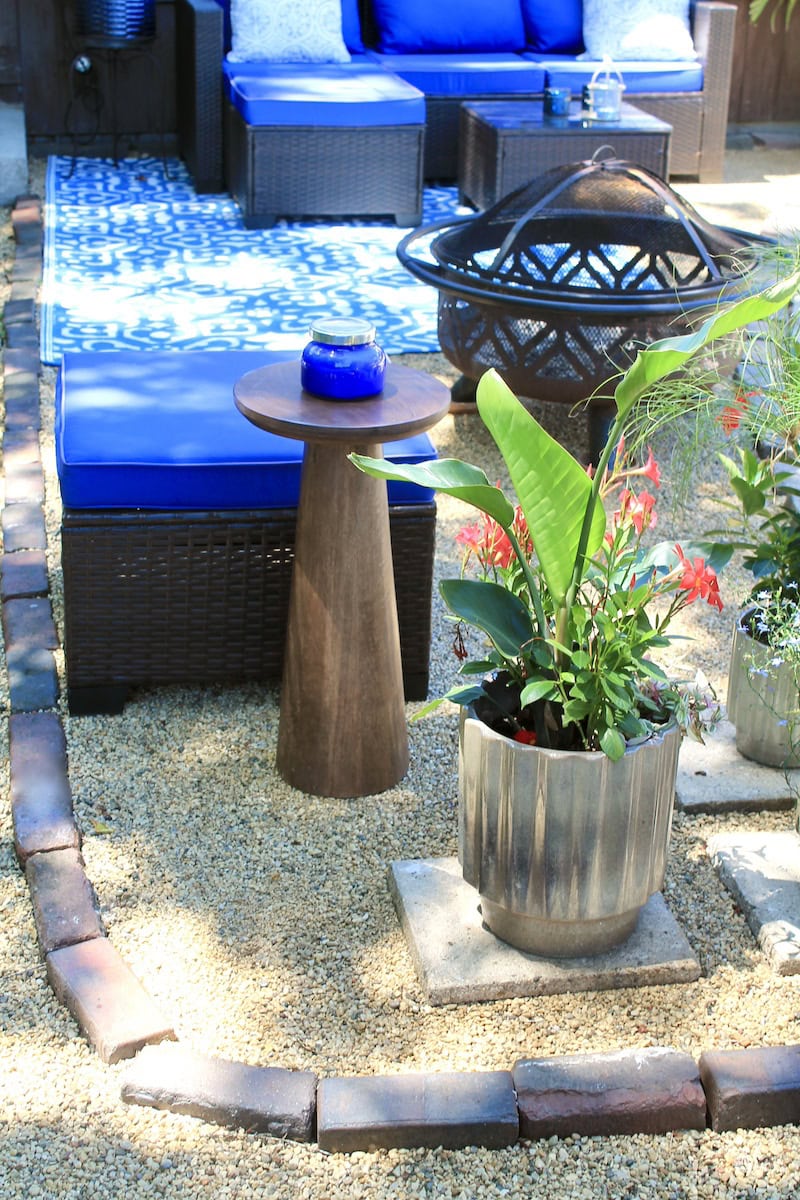
Once your diy pea gravel patio with fire pit is finished, it’s time to enjoy the fruit of all your hard labor by setting things up to make your space comfy and cozy. With that in mind, we found that there are a few things to be mindful of when setting up patio furniture on your glued down gravel patio:
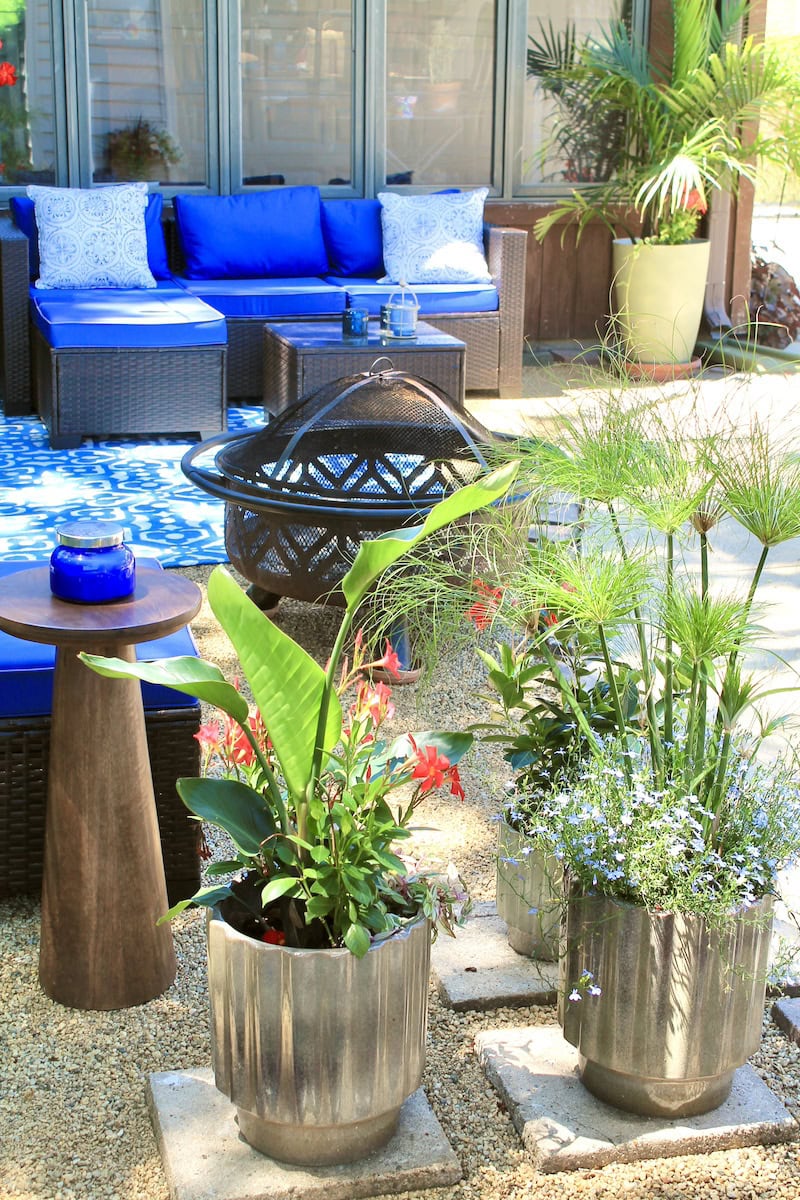
- Try not to use furniture with thin legs as with time and weight, it will break through and sink to the bottom. Things like plant stands with slender metal legs can be placed atop flat stepping stones.
- This will give potted plants dedicated areas while adding another decorative element to the gravel floor. Simply choose the spot where you may want to add a flat step stone in advance, wiggle down to stabilize it in the gravel, and (if using) apply the rock glue to any gravel immediately surrounding the stone (but not over the stone itself).
- In addition to providing stable and dedicated areas for beautiful garden containers on the patio, it will give you chance to think about layout and where you’ll want things in advance.
- Additionally, as with the plant stands, it is helpful not to put patio furniture or chairs with thin and slender legs directly onto the glued gravel surface. Those too, will tend to poke through over time.
- Instead, choose an outdoor patio area rug to provide a lovely colorful backdrop, and place furniture over that. This will help to protect and extend the lifetime of your glued gravel surfaces.
IF You’re Not Going To Use Glue for your diy pea gravel patio with fire pit:
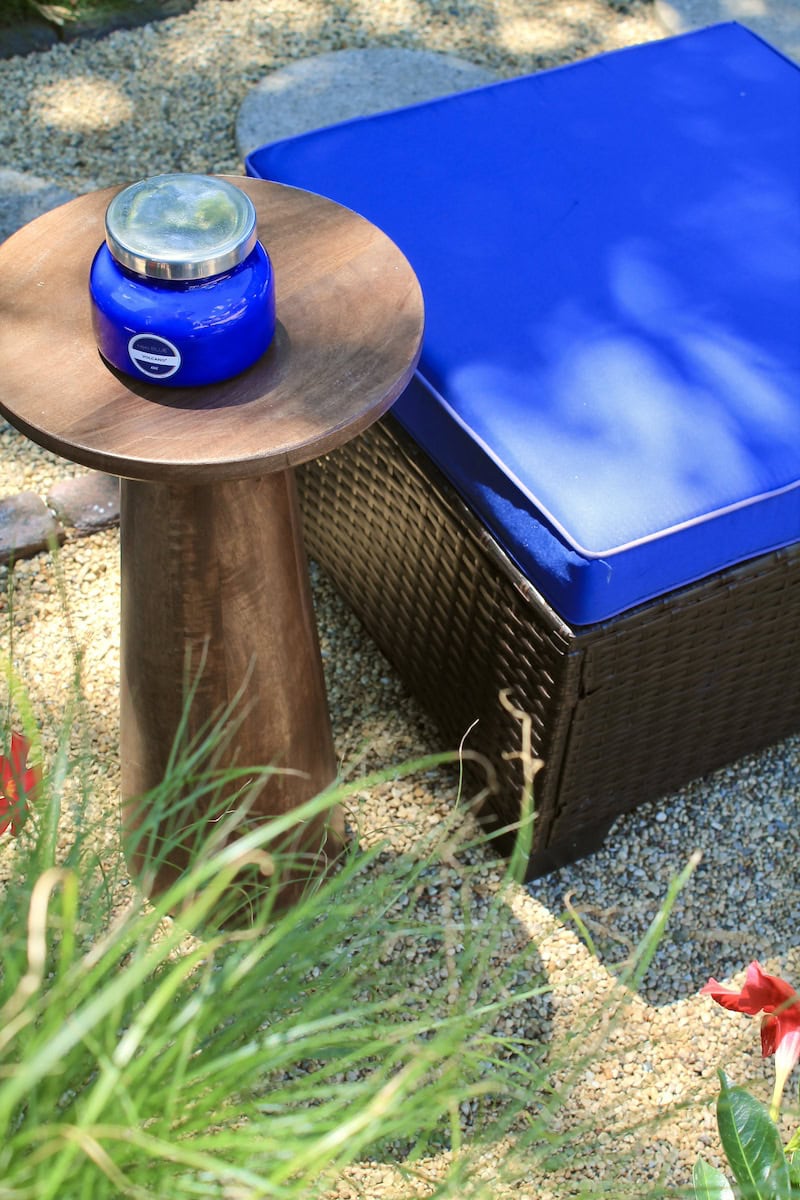
If you’re gravel won’t be glued down into place, then disregard the furniture tips and style things about as you see fit!
I know a lot of patio surfaces have a hard dirt surface beneath where a layer of gravel is simply poured on top to fill the space and left loose. In these scenarios, gardening containers, pots, and heavier metal garden table sets with chairs are set down right over the loose gravel with ease.
If you’re planning on a loose pea gravel patio, then style and combine things as you see fit and do what works best for your own personal space.
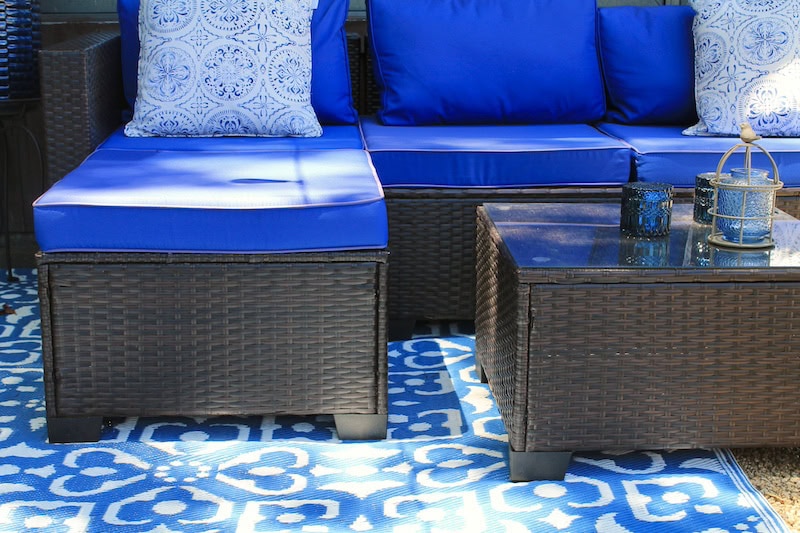
To keep things stylish and simple for our glued down pea gravel patio, we opted for modular wicker patio furniture with flat and wide bottom feet. This shape beneath the furniture seems to sit nice and stable on the gravel surface. Additionally, we did add long outdoor area rugs to help stabilize the furniture even further.
Armed with these simple tips and tricks, it is my hope that you find this a useful guide that truly inspires you to create a budget-friendly diy pea gravel patio space. Once completed, you’ll have a little outdoor gem of your very own that you can share with friends and family for summers to come.
